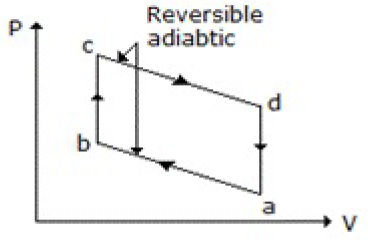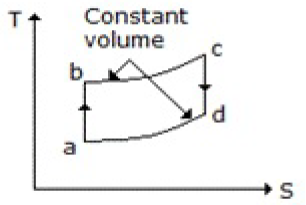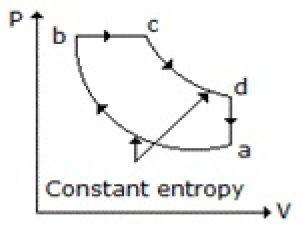Related Questions
Melting of wax is accompanied with __________ in entropy.
Increase
Decrease
No change
None of these
The activity of an ideal gas is numerically __________ its pressure.
More than
Less than
Equal to
Data insufficient, can't be predicted
In the reaction; N2 + O2 2NO, increasing the pressure will result in
Shifting the equilibrium towards right
Shifting the equilibrium towards left
No change in equilibrium condition
None of these
At 60° C, vapour pressure of methanol and water are 84.562 kPa and 19.953 kPa respectively. An aqueous solution of methanol at 60° C exerts a pressure of 39.223 kPa; the liquid phase and vapour phase mole fractions of methanol are 0.1686 and 0.5714 respectively. Activity co-efficient of methanol is
1.572
1.9398
3.389
4.238
A solid is transformed into vapour without going to the liquid phase at
Triple point
Boiling point
Below triple point
Always
At __________ point, all the three phases (i.e. solid, liquid and gas) co-exist.
Eutectic
Triple
Plait
Critical
(∂E/∂T)V is the mathematical expression for
CV
Enthalpy change
Free energy change
None of these
If two gases have same reduced temperature and reduced pressure, then they will have the same
Volume
Mass
Critical temperature
None of these
For a given substance at a specified temperature, activity is __________ to fugacity.
Directly proportional
Inversely proportional
Equal
None of these
Pick out the wrong statement pertaining to the decomposition of PCl5 represented by, PCl5 PCl3 + Cl2.Degree of dissociation of PCl5 will
Decrease on addition of Cl2
Increase on addition of an inert gas at constant pressure
Decrease on increasing the pressure of the system
None of these
Joule-Thomson co-efficient which is defined as, η = (∂T/∂P)H = 1/Cp (∂H/∂T)P, changes sign at a temperature known as inversion temperature. The value of Joule-Thomson co-efficient at inversion temperature is
0
∞
+ve
-ve
When a gas in a vessel expands, its internal energy decreases. The process involved is
Reversible
Irreversible
Isothermal
Adiabatic
Pick out the correct statement.
Compression ratio of an Otto engine is comparatively higher than a diesel engine
Efficiency of an Otto engine is higher than that of a diesel engine for the same compression ratio
Otto engine efficiency decreases with the rise in compression ratio, due to decrease in work produced per quantity of heat
Diesel engine normally operates at lower compression ratio than an Otto engine for an equal output of work
If the vapour pressure at two temperatures of a solid phase in equilibrium with its liquid phase are known, then the latent heat of fusion can be calculated by the
Maxwell's equation
Clausius-Clapeyron Equation
Van Laar equation
Nernst Heat Theorem
Clausius-Clapeyron Equation gives accurate result, when the
Vapour pressure is relatively low and the temperature does not vary over wide limits
Vapour obeys the ideal gas law and the latent heat of vaporisation is constant
Volume in the liquid state is negligible compared with that in the vapour state
All (A), (B) and (C)
A solid metallic block weighing 5 kg has an initial temperature of 500°C. 40 kg of water initially at 25°C is contained in a perfectly insulated tank. The metallic block is brought into contact with water. Both of them come to equilibrium. Specific heat of block material is 0.4 kJ.kg-1. K-1. Ignoring the effect of expansion and contraction and also the heat capacity to tank, the total entropy change in kJ.kg-1, K-1 is
-1.87
0
1.26
3.91
The unit of fugacity is the same as that of the
Pressure
Temperature
Volume
Molar concentration
With increase in pressure (above atmospheric pressure), the Cp of a gas
Increases
Decreases
Remains unchanged
First decreases and then increases
A system is said to be isopiestic, if there is no __________ change.
Temperature
Pressure
Volume
None of these
In the ammonia synthesis reaction, N2 + 3H2 2NH3 + 22.4 kcal, the formation of NH3 will be favoured by
High temperature
Low pressure
Low temperature only
Both low temperature and high pressure
The Joule-Thomson co-efficient is defined as (∂T/∂P)H. Its value at the inversion point is
∞
1
0
-ve
A refrigerator may be termed as a
Heat pump
Heat engine
Carnot engine
None of these
Refrigerants commonly used for domestic refrigerators are
Ethyl chloride or methyl chloride
Freon-12
Propane
NH3 or CO2
Which of the following diagrams does not represent an Otto cycle?



None of these
(1/V) (∂V/∂T)P is the mathematical expression
Joule-Thomson co-efficient
Specific heat at constant pressure (Cp)
co-efficient of thermal expansion
Specific heat at constant volume (CV)
Law of corresponding states says that
Two different gases behave similarly, if their reduced properties (i.e. P, V and T) are same
The surface of separation (i. e. the meniscus) between liquid and vapour phase disappears at the critical temperature
No gas can be liquefied above the critical temperature, howsoever high the pressure may be.
The molar heat of energy of gas at constant volume should be nearly constant (about 3 calories)
For a reversible process involving only pressure-volume work
(dF)T, p < 0
(dF)T, p > 0
(dF)T, p = 0
(dA)T, v < 0
When pressure is applied on the system, ice ↔ water, then
Equilibrium cannot be established
More ice will be formed
More water will be formed
Evaporation of water will take place
The ammonia synthesis reaction represented by N2 + 3H2 2NH3; ΔH = - 22.4 kcal, is
Endothermic
Exothermic
Isothermal
Adiabatic
Near their critical temperatures, all gases occupy volumes __________ that of the ideal gas.
Less than
Same as
More than
Half
